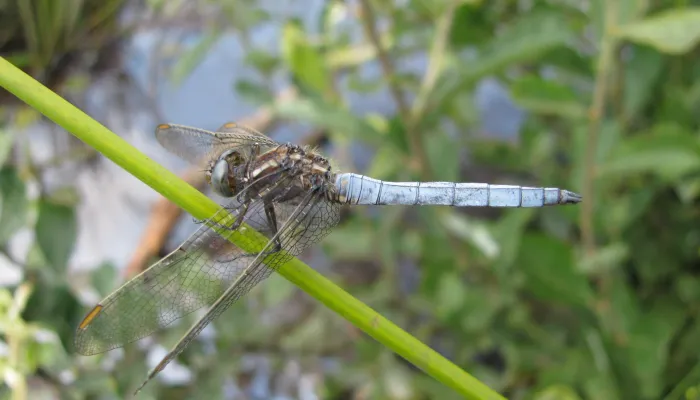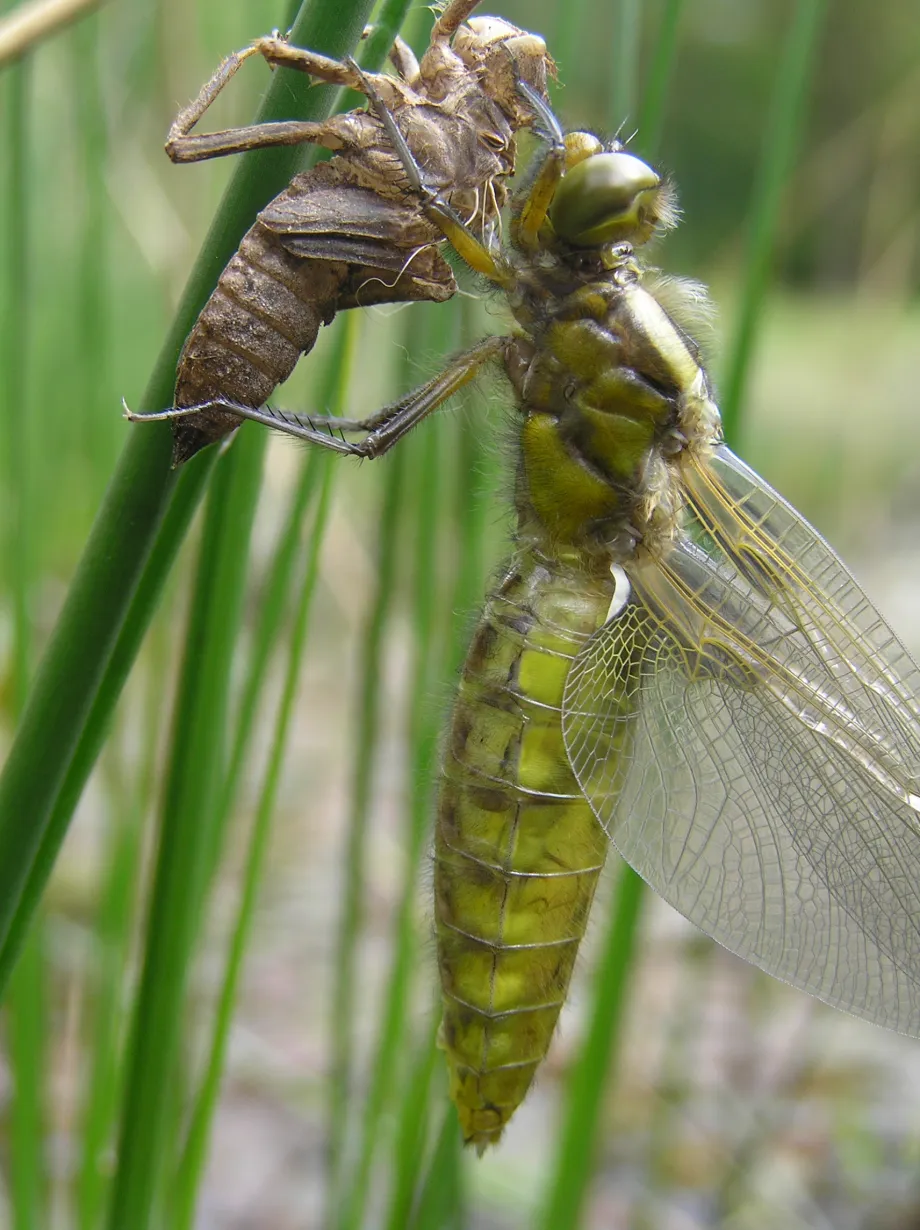
The dragonfly pumps fluid through its wings to enlarge them, and usually within 1-3 hours the newly emerged dragonfly is ready to fly. Adult dragonflies are no less voracious than the larvae, and catch flying insects such as mosquitoes and midges, although the bigger dragonflies can take butterflies or other dragonflies too.
There are a great number of dragonfly species to see at Hothfield.
Broad-bodied chasers are one of the first to be seen, emerging in April, and staying close to pools and ponds around the reserve. As the name suggests the males have broad blue bodies, whilst the females are yellow.
Banded demoiselles are usually associated with fast flowing water, so you will see them on river banks. They can be very numerous, and you could expect to see hundreds together on bank side vegetation. Unlike the traditional dragonfly, demoiselles’ and damselflies sit with their wings running along their bodies, and the banded demoiselle is particularly striking due to a large black circle in each wing.
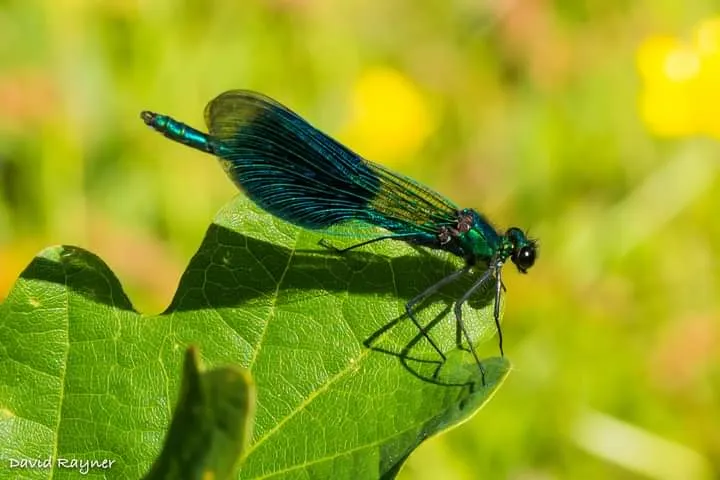
David Rayner
Emperor dragonflies are the largest of Hothfields dragonflies. With a wingspan up to 15cm, they can be quite a sight as they patrol through the skies. They very rarely settle, which makes it very difficult to get a good look, however their blue body and green head make them easy to identify.
Keeled skimmer is the rarest dragonfly that breeds in the acid bogs. The best place to see them is from the boardwalk across the main bog. The pale blue males hang around the shallow peaty pools, waiting for a female to arrive.
The best way to find dragonflies is to look for still water bodies, especially those that are free of shade and even better if they are sheltered from the wind. You will need a sunny, warm day too – dragonflies need a lot of energy to get around, and on cool days will spend their time warming up on vegetation.
The current warm weather will suit the adult dragonflies, as they are able to spend more time hunting and searching for mates. However, the larvae will suffer if their pools dry up. Kent Wildlife Trust work hard to keep the bogs permanently wet, blocking ditches and removing trees to prevent them sucking out the water. In the past we have been able to guarantee the bogs remain moist through the summer, but extreme drought caused by climate change is continuing to make nature reserves a challenging place to live.
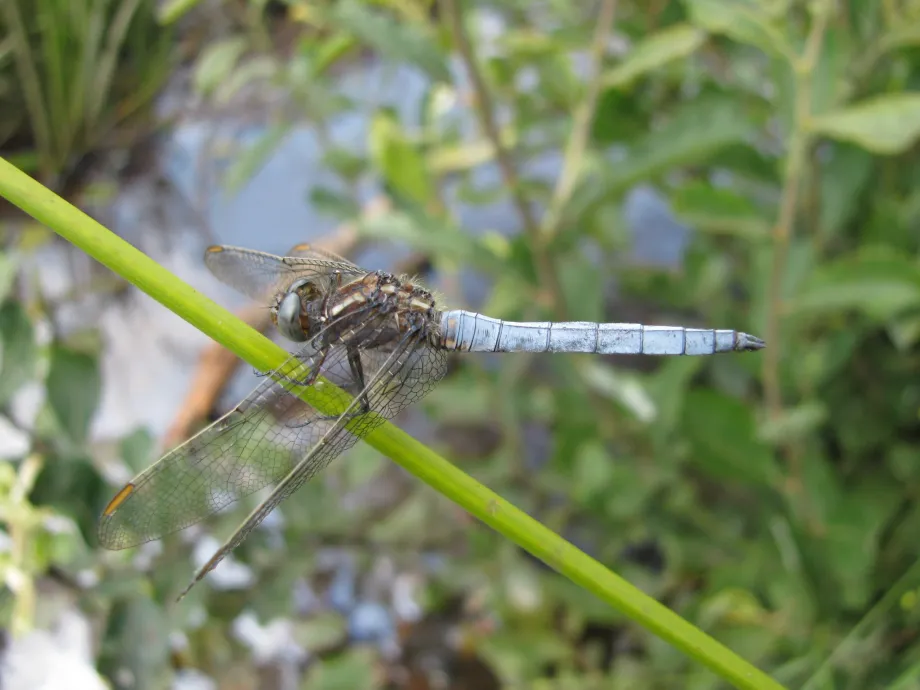
Ian R
Breaking news from Hothfield Heathlands
Thanks to Val Butcher, we were excited to have a report of a tree pipit singing on the reserve in June. Tree pipits display from isolated trees, but build nests on the ground, at the base of heather and grass tussocks. With the support of visitors keeping their dogs on leads, we hope that this wonderful bird will have the opportunity to attract a mate and raise chicks.
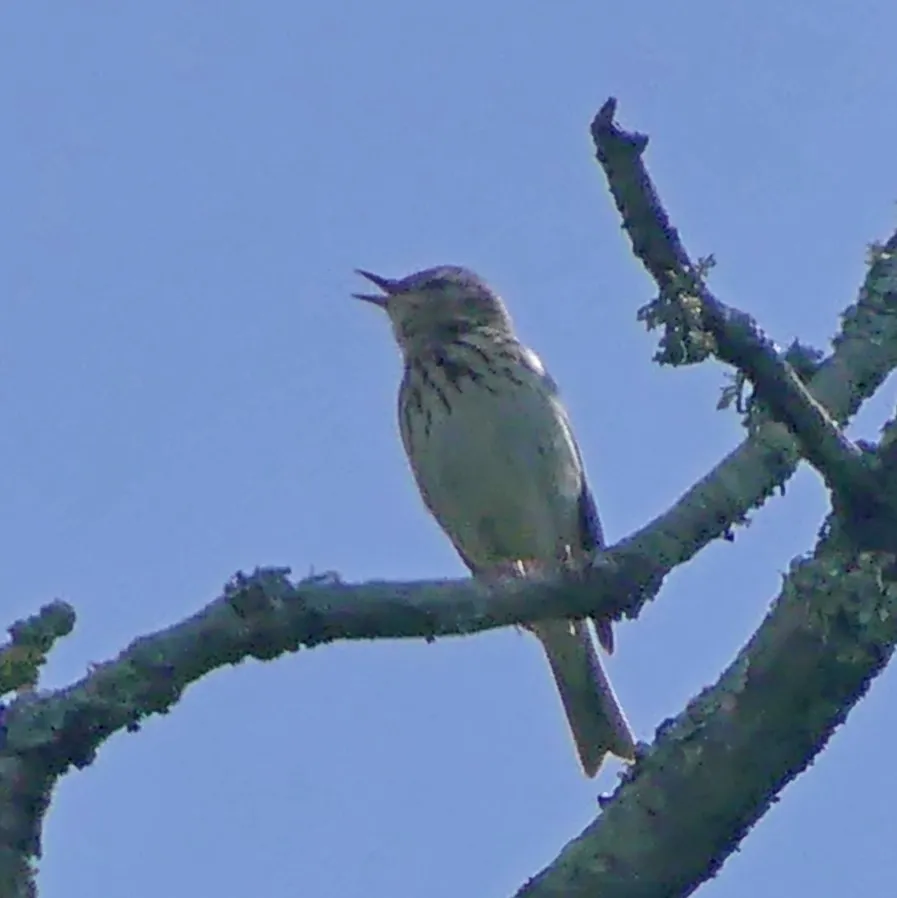
Val Butcher
Hothfield Heathlands
Rich in flora and fauna, this important reserve contains Kent's last four valley bogs and one of its few remaining fragments of open heath.

